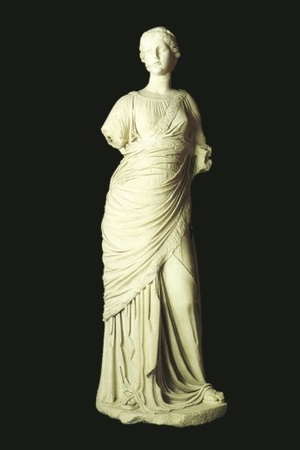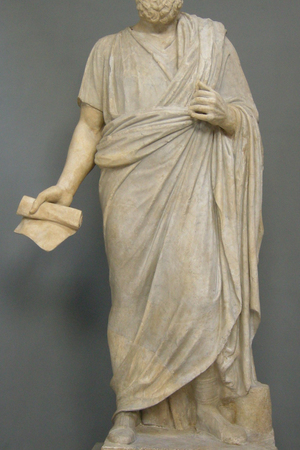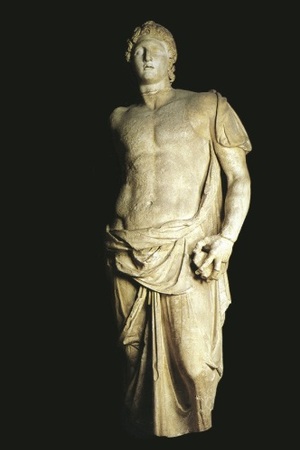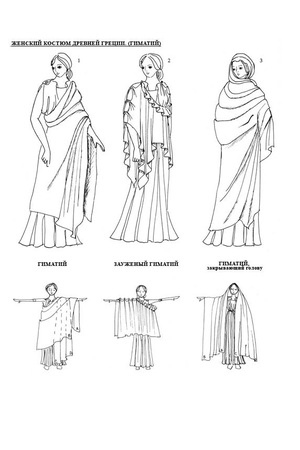Himation
Himation
Himation (Ancient Greek: ἱμάτιον - fabric, cloak) was the outer garment of the ancient Greeks, a rectangular fabric cloak. It could be worn by both women and men. The himation was typically worn over the chiton, but it could also be worn over bare skin. During the classical period, the himation was a piece of woolen fabric of various sizes. The size of the himation is often estimated to be around 1.7 meters in width and up to 4 meters in length, with the long fabric draped around the owner's figure. The most common way of draping it was as follows: the fabric was thrown over the back and across the left shoulder, covering the left arm and hanging down to about one-third of its length. The remaining fabric was passed under the right arm, covering the body from the front, and then the end was thrown over the left shoulder backward. A more complex draping style of the himation, called the "orator's style," covered both arms with the cloak.
According to Greek fashion, the himation should hang below the knees but not reach the ankles. It was not fastened in any way, but to prevent it from slipping during movement, small lead weights could be sewn into the edge of the himation. When someone made excessive gestures during a speech, it was mockingly said that they were "girding their himation."
The ancient Greek himation corresponds to the Roman palla for women and toga for men. These garments appeared in the ancient Roman state with the imitation of the fashion of Ancient Greece.
Related topics
Literature
- Bieber M. Entwicklungsgeschichte der griechischen Tracht. Berlin, 1967
- Pekridou-Gorecki A. Mode im antiken Griechenland: Textile Fertigung und Kleidung. Munich, 1989
- Women’s Dress in the Ancient Greek World / Ed. by L. Llewellyn-Jones. London, 2002
- The Clothed Body in the Ancient World / Ed. by L. Cleland, et al. Oxford, 2005
- Lee M. M. Body, Dress, and Identity in Ancient Gress. Cambridge, 2015 (with an indication of the latest literature)







